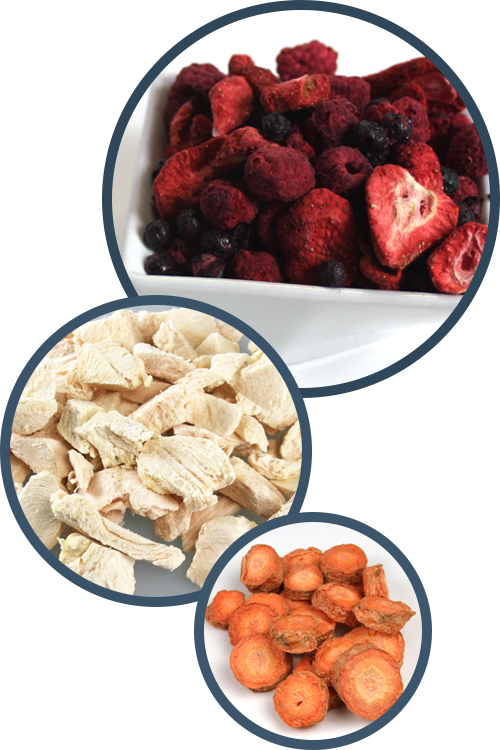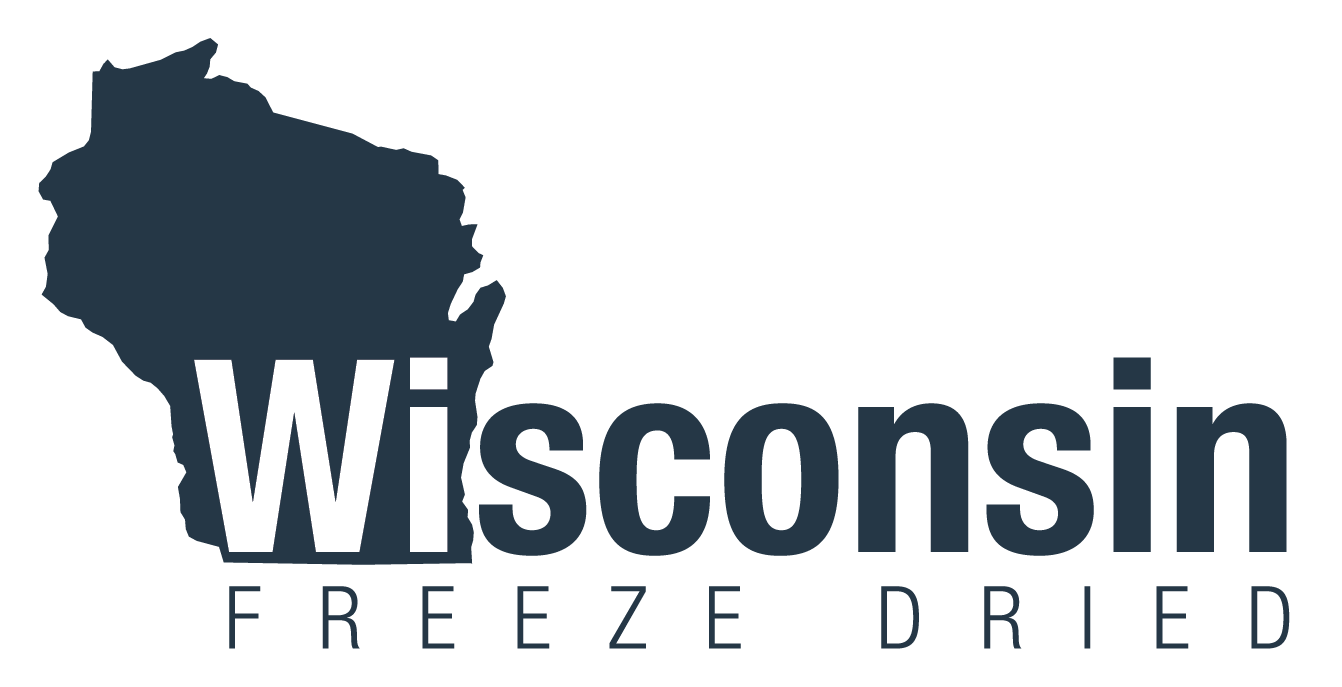

Freeze-dried foods that are sealed against moisture can be stored at room temperature without refrigeration and remain viable almost indefinitely. The freeze-drying process causes no noticeable damage to foods, preserving their flavor, texture, size and shape. Freeze drying also has a longer shelf life than any other preservation method, without harmful additives or changing the food’s structure and texture. Freeze-dried foods taste fresh, smell fresh, look fresh, have a fresh mouthfeel, and stay fresh longer than any other food. This makes freeze-drying the best food preservation solution available today.
The freeze-drying process
Food is first frozen and then put in a high-pressure state. If done properly this does not create ice crystals that can damage cell walls and delicate molecules, destroying food texture and valuable nutrients. Instead, the high-pressure solid water is then sublimated: converted directly from a solid to a gas – and removed from the food. This unique process has several advantages: All moisture is completely removed from the food, stopping all enzymatic action and bacterial growth. The food’s structure, texture, and nutritional content are wholly retained. It is now less than half the weight, easy to ship or store, with a shelf life that other preservation methods cannot compare to.
Freeze-dried, not frozen
Freezing foods create ice crystals inside of the food that can cause damage to cell walls and delicate molecules – you may know the results as freezer burn. When such a food is thawed it is mushy and bland and has lost much of its nutritional content. Enzymes and microorganisms once held in check by animal or plant cell walls are now free to consume and destroy useful proteins, vitamins and minerals.
No preservatives
Most modern processed foods contain preservatives to reduce bacterial growth and artificially supplement flavor. Modern preservatives rely on high salt content and ingredients you don’t want to read are in your food: calcium propanoate, ethylenediaminetetraacetic acid, methylchloroisothiazolinone and sodium nitrite to name a few. These artificial ingredients grant foods a shorter shelf-life than freeze-dried and have provoked a debate amongst nutritionists and toxicologists as to their negative health effects. Because the progress of enzymes and microorganisms in preservative-added foods is only slowed and not stopped, freeze-dried foods have longer shelf lives than foods preserved with artificial additives.
Not dehydrated
Dehydrated foods are tough and feel like leather. The removal of moisture by dehydration leaves the food deflated and gummy. Most modern dehydration methods also use chemical additives or artificial gasses to speed up the dehydration process. Some add salt or artificial preservatives to further impede microbial growth. Freeze drying sublimates the moisture in food with no additives or gasses by using high pressures and temperatures. The food’s shape, texture, flavor and quality are retained with equivalent or superior shelf life when compared with dehydration.
Easily transported
Since over 50% of the weight of food is water, freeze-dried foods weigh less than half that of other food using a different preservation method. This means a light-weight product and lower shipping costs.
| Food Preservation Method | Retains Nutrients? | Retains Texture? | Requires Artificial Chemical Additives? | Causes Structural Damage to Food? | Remains Fresh to Taste, Smell, and Eat? |
|---|---|---|---|---|---|
| Freeze-Dried | Yes | Yes | No | No | Yes |
| Frozen | No | No | No | Yes | Yes |
| Artificial Preservatives | Yes | Yes | Yes | No | No |
| Dehydration | Yes | No | Often | Yes | Yes |
